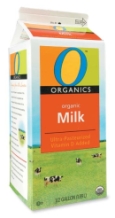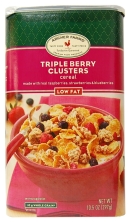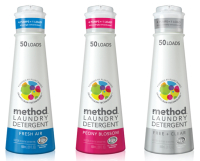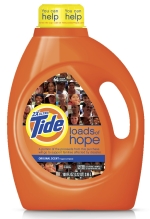National brands used to have it pretty easy. Their marketers were class acts with blue chip backgrounds and big budgets. They could outspend and outclass private labels on all fronts, from product quality and R&D to advertising and packaging.
Not so anymore. More and more retailers are hiring top-flight marketers, designers and advertising agencies. They have embraced the fundamentals of classic CPG marketing and, now, some have become so sophisticated that they are in a position to teach brand marketers a thing or two.
So who’s really coming out ahead? We look at four brand marketing strategies and make the call.

Private label’s decision to invest in packaging was born of capital restrictions. Without the massive ad budgets of national brands, retailers had no choice but to turn the bulk of their focus on packaging. And it has paid off. Stroll the likes of Safeway, Publix, Supervalu or A&P and you will find private label brands that bear little resemblance to their generic ancestors. Retailers are creating elegant, simple – even unexpected – design solutions.
Safeway’s O Organics line is a great example of a retailer embracing the power of the pack. Determined to provide a legitimate organic option for veteran and new organic shoppers, O Organics comes across with both beginner-friendliness and expertise. The bold O logo and bright color scheme has made O Organics so successful that the range is now sold well beyond the walls of Safeway.
A commitment to quality packaging has played a huge role in diminishing the stigma of generic and setting the stage for the long-term, post-recession growth of private label. That commitment is, along with increasing product quality, a big reason why seven out of 10 consumers now believe that private label products are as good or better than the name-brand alternatives, according to a nationwide study by Ipsos-MORI. In the context of the national/private label competition, investment in the pack is a must to stay with the rising tide of superb packaging.
The decision: Private label

Viewing the pack as media immediately begs the question: what do we want to say? Tone of voice is everywhere on packaging today: on functional waters, under Snapple lids, on bandages and on coffee cups. Almost every brand – private label and national brands alike – can entertain with tone of voice. Few private label brands, however, are well positioned to do a truly successful job of captivating consumers with their story.
Some new private label brands have the opportunity to tell real stories. Hartford Reserve, the premium private label from A & P, has done a great job telling a story and giving an infant brand a feeling of genuine heritage. Named and created in honor of those who founded the supermarket 150 years ago, it contains only products of quality and integrity befitting the original founder’s name.
Hartford Reserve is an exception. National brands have far greater heritage from which to create a compelling story.
The decision: National brands

With private label rapidly closing the gap with national brands on the graphic communication front, structural design looks to be the next frontier.
When it comes to trends in packaging structure, retailers can theoretically react much faster than the competition. In their freedom to select from different structure suppliers, they have a distinct advantage over national brands. But national brands have the advantage when it comes to researching and developing important new structures that evolve the entire category. If private label can be twice as fast, national brands have to be twice as smart.
For national brands, now is the time to look at the structural status quo and ask, “What’s next?” This question, however difficult to answer, leads national brands away from price wars with private label and usually down one of two tracks: environmental or human factors.

The second focus of structural innovation should center on human factors, or more specifically, ease of use.
Every day we interact with dozens of products from the supermarket. Most of the time these interactions are perfectly satisfactory and forgettable. However, every once in a while there is a glitch – a small, unexpected annoyance. Maybe it’s the remaining squeeze of mustard you can’t get out of the bottle, maybe it’s the baby formula you spill as you’re holding your child in one hand and trying to mix with the other. For a structural innovation team studying these interactions, the greater the annoyance the greater the potential gold mine. When we look closely, we can find ways to improve even the most rote tasks by analyzing and modifying basic structures that have existed imperfectly for too long. In making life even a little bit better, and patenting these solutions, national brands can set the bar for a category – and get back in touch with their core consumers in the process.
The decision:It’s a tie, though national brands are better poised to come out ahead.

In a recent article, Fast Company calls for brands to take up an arms race of goodness. It asks: “Why promote a brand with stick-on emotion when you can tap the real thing?” It uses Downy laundry detergent as an example of a brand that slaps an image of a mother’s love on its bottle, but misses the opportunity to truly support the concept it tries so hard to own. Why not up the ante and support struggling mothers? Or partner with CASA-NYC, an organization that works to take children out of foster care and into permanent, loving homes?
In the context of private label competition, an arms race of goodness works in favor of those with the greatest resources: national brands. By picking goodness initiatives that are uniquely in line with their brand values then telling this story compellingly on pack, national brands can cement their positioning and point of difference versus the competition. It’s much easier for a loyal consumer to switch away (and stay away) from a brand with slap-on emotion than it is to abandon a brand that you know really supports something good.
A goodness arms race brings brands back down to earth and focuses them on what’s important. After almost two years of economic hardship, this return to values is exactly what the American consumer is looking for.
The decision: National brands
Jean Koeppel is managing director of Blue Marlin, NY. Reach her at jean.koeppel@bluemarlinbd.com or 646.688.1010. Blue Marlin is the home of landing big ideas, which are at the heart of everything we do. We pride ourselves on delivering relevant, unique and consistent experiences across brand touch points worldwide. Blue Marlin is an independent integrated brand design consultancy with an international network of offices across the USA, UK, Australia and the Far East.
